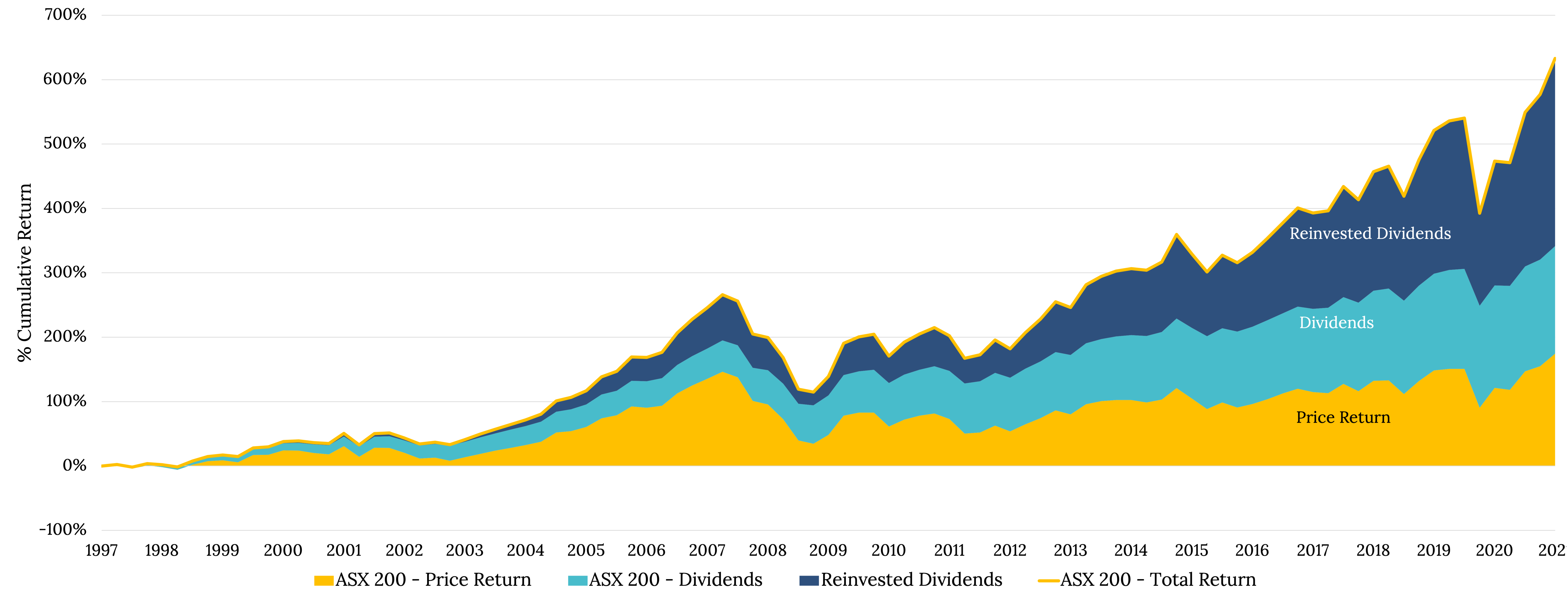The 2 big risks of income strategies, and how to fix them - part 2
The issue with equity market income - ASX200
While equity market income has been a crucial part of total return for over 100 years and sometimes the sole contributor, it is also volatile and unreliable. 2020 is perhaps the best demonstration of this.
Dividend investors had a tough crisis. Not only were dividends cut, as they usually are during an economic slowdown, but many cuts were unpredictable, and some cuts were made after companies reported their results, often as a precautionary measure or instructed to do so by authorities to preserve capital.
The crux of a traditional, dividend focused equity income strategy is to identify in advance businesses capable of sustaining a divided payment through a crisis. COVID was not a normal economic event, and equity income strategies largely disappointed versus expectations.
For investors primarily or exclusively in the ASX, this was exacerbated as the biggest companies, with the largest dividend yields were most affected by COVID-19 - the oil, mining and financial sectors that litter the ASX TOP 20.
Some may argue that income is not so important when capital growth has performed so well, but that’s not the case in the local market. Taking total return as the ultimate goal, the below chart shows ASX200 investor’s reliance on income for the last 13 years, with all return coming from dividends.

Concentration risk
With Australia being a small market in a global context and with an even smaller cohort of quality companies offering attractive dividend yields, only chasing income in Australia can also create a lack of diversity in portfolios, and subject investors to greater volatility.
If investors are looking for income, not only do they need to consider looking beyond dividends, but also beyond Australia...as we will discuss in part 3.
4 topics

